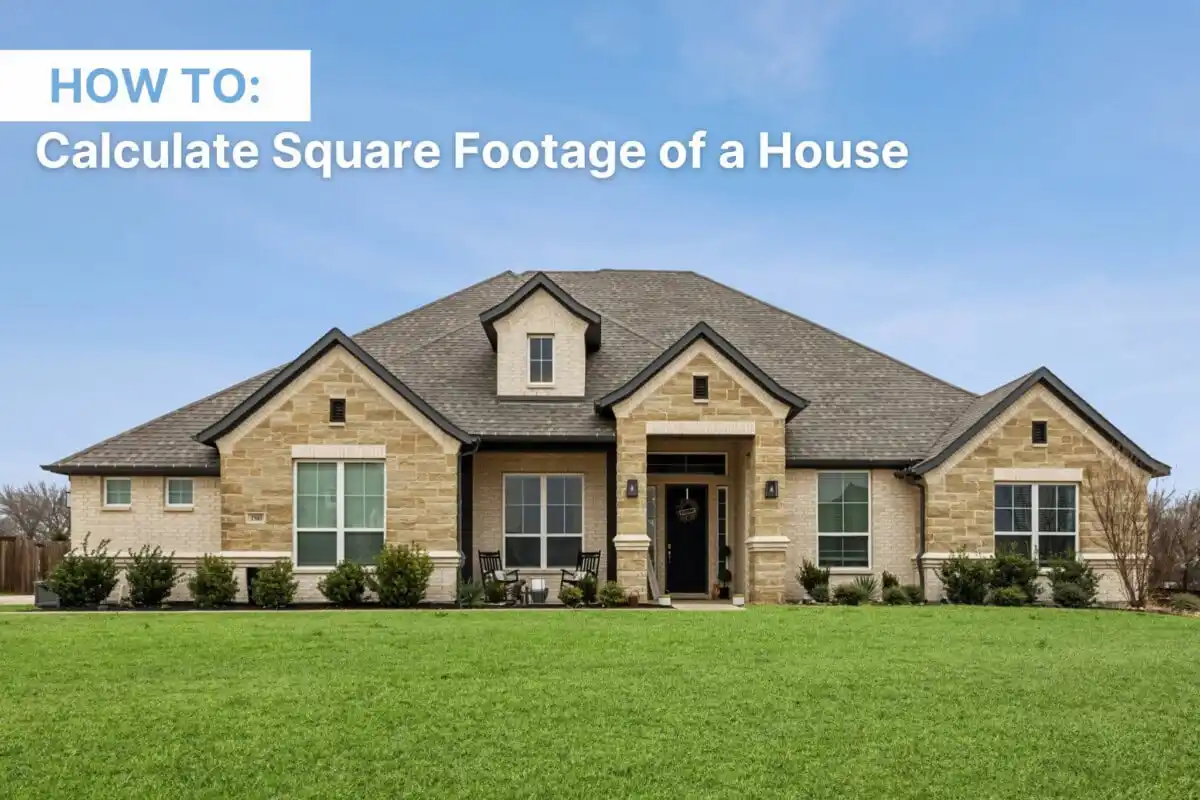Calculating the square footage of your home is an essential task, whether you’re trying to determine how much space you have for furnishings or calculating how much flooring or paint you’ll need. Square footage is a critical measurement used by homebuyers, sellers, appraisers, and even renovators to estimate the total area of a home.
It’s also often used in determining the market value of a property or assessing the overall living space. Understanding how to calculate the square footage of your home accurately can save you time and prevent mistakes.
What Is Square Footage?
Before diving into the methods of calculating square footage, it’s important to understand exactly what square footage refers to. Square footage refers to the area of a surface, typically a floor, and is expressed in square feet. It represents the amount of usable or livable space within a home, which is why it’s crucial to know how to measure it accurately.
In most cases, square footage is calculated based on the measurements of the floors of the house. However, other areas such as walls and ceilings may come into play when calculating other aspects, such as the amount of paint needed or the cost of installing flooring. It’s essential to note that the ceiling height or wall height does not directly influence the square footage unless you are factoring in volume measurements.
Why Square Footage Matters
Calculating square footage is important for various reasons. If you are selling your home, accurate square footage is essential to properly price the property. Similarly, buyers look at square footage to determine whether the home offers sufficient space for their needs. Beyond real estate transactions, accurate measurements are vital for renovations, furniture purchases, and home improvements. Knowing the square footage will help you understand how much material you need for flooring, paint, carpeting, or even if you want to subdivide the space.
Moreover, square footage is an essential measurement for calculating property taxes, insurance premiums, and more. With these facts in mind, it’s clear that accurate square footage measurements can have a direct impact on both financial decisions and planning.
Gathering Your Tools
To accurately measure the square footage of your home, you’ll need a few tools. The most common tools for measuring square footage are a measuring tape and a calculator. For greater accuracy, a laser measure can be used, which automatically calculates the distance between two points and provides accurate measurements. You can also use apps or online tools to help with measurements, but it is always a good idea to double-check with a manual measuring method.
Step-by-Step Process for Calculating Square Footage
1. Measure the Length and Width of Each Room
Start with the largest room in your house and measure the length and width of the space. It’s best to measure from the wall to the opposite wall, ensuring that you get the full dimensions. For rectangular or square rooms, simply multiply the length by the width. For example, if your living room is 15 feet long and 12 feet wide, you would multiply 15 x 12 to get 180 square feet.
Measure all rooms individually, whether they are bedrooms, living rooms, bathrooms, kitchens, or hallways. Keep in mind that if a room has a non-standard shape or alcoves, you may need to measure multiple sections of the room and then add them together.
2. Measure Irregularly Shaped Rooms
Not all rooms are simple rectangles. Some homes have L-shaped rooms, triangular rooms, or spaces with alcoves or extensions. In these cases, you need to break the room down into smaller, simpler sections. Measure each section and then calculate the square footage for each part. Afterward, simply add the square footage of each part together to get the total area for that room.
For example, if an L-shaped room has one section that measures 10 feet by 12 feet and another section that measures 8 feet by 6 feet, you would calculate the square footage of both parts separately and add them together: (10 x 12) + (8 x 6) = 120 + 48 = 168 square feet.
3. Include Hallways, Closets, and Other Spaces
While you may focus on measuring the larger rooms in your home, you should also include hallways, closets, and smaller spaces like laundry rooms or pantries in your calculations. These areas may seem small, but when combined, they can add up to a significant amount of square footage. Measure each of these areas the same way you would a larger room, multiplying the length and width for the total square footage.
For example, a closet that is 4 feet by 6 feet will add an additional 24 square feet to your home’s total square footage.
4. Determine If You Need to Include Certain Areas
When measuring square footage, it’s important to know what to include and what to exclude. Generally, finished, livable spaces within the house are included, while unfinished or non-livable spaces are excluded.
- Living Spaces: Finished rooms such as bedrooms, bathrooms, living rooms, dining rooms, kitchens, and hallways are all included in the square footage.
- Garages: Garages are typically excluded unless the garage is converted into livable space, such as a guest room or office.
- Basements: Finished basements are included, as long as they are used as livable space. Unfinished basements, however, are usually not included in square footage measurements unless otherwise specified.
- Attics: If an attic is finished and used as living space, it is included. Unfinished attics are generally not included unless they are converted into a room or another livable area.
- Exterior Spaces: Outdoor areas such as balconies, porches, decks, or patios are not included unless they are enclosed and fully integrated into the home’s livable space.
If you are unsure about whether to include a specific area, it’s always best to check the local building codes or consult a real estate professional.
5. Measure Additional Floors in Multi-Level Homes
If your home has more than one floor, you’ll need to measure each floor separately. Add the square footage of each floor together to get the total square footage of the house. For example, if your first floor is 1,200 square feet and your second floor is 1,000 square feet, your total square footage will be 1,200 + 1,000 = 2,200 square feet.
Make sure to include stairs in your calculation. While stairs themselves are not typically counted as square footage, they are part of the total area and should be considered when measuring the space as a whole.
6. Use a Floor Plan or Existing Measurements
If you have access to a floor plan of your home or if you have previous measurements of the space, you can use these as a guide. A floor plan will often show the exact dimensions of each room, making the measurement process much easier. Keep in mind, however, that some floor plans might not be entirely accurate, especially if the home has been remodeled or expanded.
If you don’t have a floor plan but have access to real estate listings or property records, these documents may also provide square footage data for your home. However, it’s always a good idea to verify these numbers with a personal measurement if you can.
7. Double-Check Your Measurements
After calculating the square footage for each room or space, go back and double-check your numbers. Make sure that you haven’t missed any areas, and ensure that all your measurements are accurate. Even small errors in measurement can add up, so taking the time to verify each step can make a big difference in the final square footage calculation.
How to Verify Square Footage
In many cases, you may need to verify the square footage of your home. This is especially important when buying, selling, or refinancing a property. If you’re uncertain of the measurements, you can hire a professional appraiser to measure the square footage for you. A licensed appraiser will follow specific guidelines to ensure the measurements are accurate and in line with local real estate standards.
In addition to hiring an appraiser, you can also check your property’s public records or contact the local assessor’s office for the official square footage of your home. Some online real estate platforms may provide square footage estimates based on data from public records or other sources, but it’s always advisable to double-check the figures.





